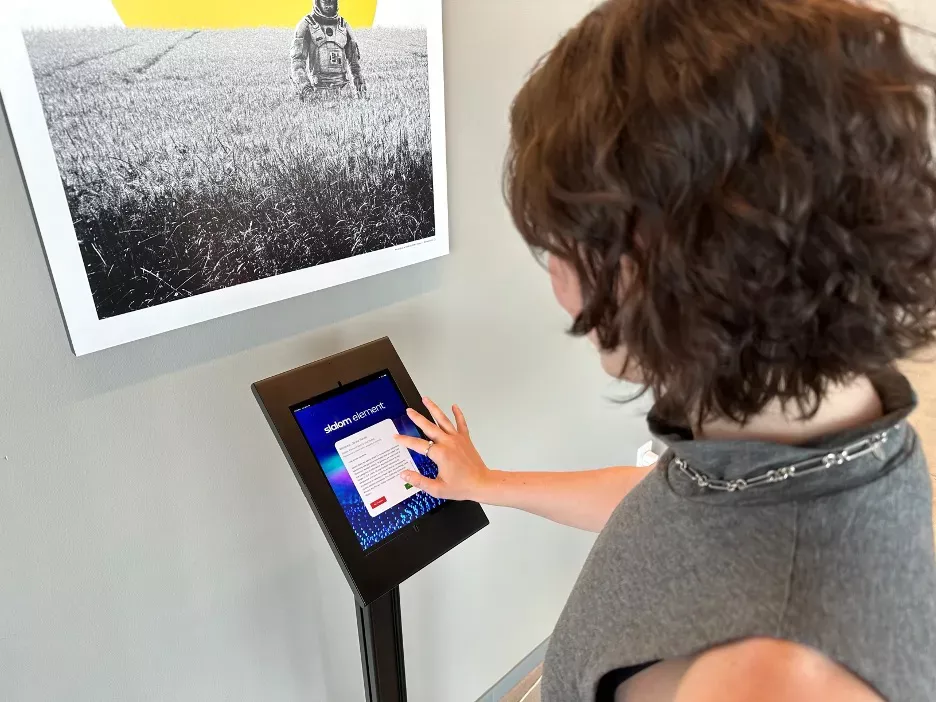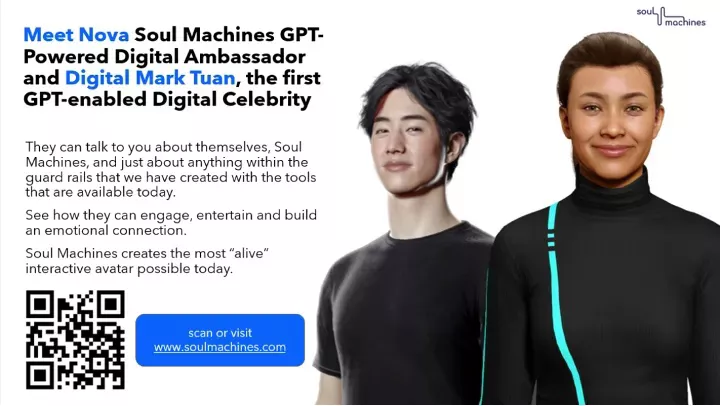Crafting deep experiences: How GenAI powers personalization and escapism

Think about the last time you had an unforgettable experience interacting with one of your favorite brands. Such moments can stop you in your tracks and make you take notice. Perhaps it was a well-designed theme park experience. Or a meal that you’ll never forget. A mobile shopping experience that exceeded your expectations. Or did a customer service rep solve your concern effortlessly and exactly how you wanted? What made the experience stand out in your mind? What was the wow factor? And more importantly, how can we learn from that experience and make more of those moments happen?
At Slalom we’re curious about these experiences and how we can help our clients build more of these moments for their customers and employees. To help answer some of these questions and apply them to real world scenarios, we undertook a global research effort we’re calling the Future of Experience. In this study, Slalom surveyed over 14,000 people across 15 countries to understand their core motivations driving preferences in both work and leisure settings. Drawing on these findings, discussions with our clients and partners in Slalom’s Element lab212 in New York, and looking through the lens of generative AI, we invite you to explore some actionable approaches to empower businesses and leverage generative AI in ways that exceed users’ expectations.
Reinventing you: Becoming yourself (or not) online
A now infamous 1993 cartoon from The New Yorker declared, “On the internet, nobody knows you’re a dog.” In the thirty intervening years we’ve seen individuals experiment with a variety of platforms for self-expression that have allowed for a range of anonymity options. In our study, we explored how closely people across the globe wanted their offline and digital personas to match. Our findings show that two out of three people want to look and behave the same in their digital and physical worlds; the other third prefer their digital and hybrid experiences to be distinct from real life. Generative AI tooling such as voice cloning technology can be applied to empower individuals with avatars that look and sound just like them and provide that overlap. Other readily available tools create distinct digital experiences unlike their real-world personas.
From realistic representations to stylized expressions, individuals can craft digital personas that align with their desired level of overlap with their physical selves. This flexibility allows for self-expression and empowers users to navigate the digital world on their own terms. As we explore the creation of new digital experiences, there are innumerable ways for using generative AI to give users the creative freedom once only possible at the highest levels of Hollywood or Silicon Valley.
Tailoring your experience: The balancing act of personalization and privacy
Personalization is one route to creating unique and memorable experiences. While businesses are alreadytailoring experiences to their customers’ preferences, we believe generative AI can add exponential value. Personalized experiences and customer data gathering necessarily go hand in hand. However, with growing sensitivity and consumer awareness, gathering personal data has become more complex. Our global Future of Experience study results show that while 88% of people want control over their data, 84% desire experiences that cater to their unique needs. In other words, people want tailored experiences, but they also want control over how their data is collected and used.
By empowering consumers with decision points, transparent practices, and clear value-add communication, organizations can foster trust and increase the likelihood users will consent to data collection. Our studyfound a 16% increase in data sharing for personalized experiences when the bonus was clear. Communicating that personal data will be used to help shape specifically tailored experiences gives individuals a tangible reason to share their personal data.
At Slalom Element lab212 we’ve seen this play out in real life. One of our lab experiences allows visitors to see surprisingly accurate, individualized personality assessments of fellow guests. For this experience to work, they have to opt into sharing their data and allowing us to process their biometrics. Visitors who initially opt out of the experience frequently change their minds after witnessing others enjoying the experience. The FOMO is real, and once they fully understand how the experience works, they’re significantly more willing to consent to the data collection.

Level up: Boost your physical and digital game
When it comes to shopping for clothes, providing healthcare information, and providing financial information, our study found that most people — around 66% — want the option to use both physical and digital experiences. People value the convenience and efficiency offered by digital channels while still enjoying the tangible experiences offered with physical environments.
We believe generative AI can be used to enhance both physical and digital interactions. Customer service through intelligent virtual assistants and actually chatty chatbots powered by a well-trained generative AI system level up the digital. A high quality, thoughtfully trained virtual assistant can provide personalized recommendations, answer queries, and offer support, providing seamless customer experiences, and improving operational efficiency. This isn’t just science fiction: Slalom is helping organizations today forge powerful consumer connections by seamlessly integrating real-time, generative AI-enabled experiences to amplify and complement in-person engagements.
For in-person experiences, we’ve seen visitors to Slalom Element lab212 engage with generative AI tools to enrich communication. Marrying generative AI prompts with augmented reality, we’re able to give visitors a glimpse into the not-too-distant future. A future where, being prompted with conversation starters, follow-up questions and interesting topics to discuss appear before your eyes almost magically. With an eye towards building better tomorrows for all, we have facilitate discussions on how we can apply these technologies to their our client’s specific use cases.
Organizations can meet people’s needs by providing digital platforms for convenience and personalization, while simultaneously tailoring in-person experiences to foster authentic connections and trust.
Virtual villages: Amplifying community and collaboration
Our global research study found that people are 10% more open to interacting to large groups of people when online, compared to in person. Enabling and fostering large communities online has traditionally been a time- and labor-intensive exercise. We believe generative AI platforms will facilitate community and build loyalty by providing collaborative spaces to foster shared interests and experiences.
For example, we’re starting to see the emergence of AI-powered, fully digital influencers and digital representations of actual celebrities. A public figure’s digital persona, such as Soul Machine’s implementation of Mark Tuan, Carmelo Anthony, and Jack Nicklaus, can enable highly personalized interactions with fans in ways that the actual human could never dream of.
Specifically, being “present” at multiple simultaneous events in different physical locations and speaking languages the celebrity can’t actually speak, are two concrete examples of how generative AI can scale their human capacity. Imagine the digital twin of a beloved pop star performing simultaneously at events across the globe! Leveraging such technologies, celebrities will be able to grow their online communities and collaborate with them in new ways, satisfying people’s desire to interact with larger communities while online, or even in person.

Reality X.0: Where escapism meets novelty in AI-powered experiences
Our study found that around 50% of people prefer immersive experiences that promote escapism while the other half chase novelty. When designing new products and services, remember that people are seeking both to escape into an experience and discover or learn new things from it. At Slalom Element lab212 we’ve been exploring how organizations can design captivating immersive experiences and transport individuals to unexplored realms that remain fresh, novel, and exciting.
Imagine virtual worlds created on the fly, tailored specifically to the user’s interests and powered by generative AI technologies that make them nearly infinitely scalable! Entertainment and gaming industries should explore this technology to create personalized storylines, interactive narratives, and virtual environments that offer innumerable experiences. By adapting content based on individual preferences and seeking to surprise and delight users, generative AI can satisfy the desire to escape and keep users coming back again and again by keeping the experiences novel.
Next best actions
With an eye towards building better futures for all, we’d also like to leave you with some concrete steps to begin exploring the “Future of Experience”and ways to approach tools such as generative AI in your work, life, and future. Where should you go next?
Get out there and sample the newest immersive experiences in a city near you. Really and truly engage in the content and storyline. Try to turn off the rational — how did they do this? — at least for a little while. You’ll have plenty of time to reflect on the experience afterwards and unpack their techniques.
Now is the time: go explore, solo or with others, and share your experiences with friends, family, and co-workers! As we were building Slalom Element lab212 our team took a few “field trips” to experience the sights and sounds of New York City, Chicago, Sydney, and Seattle. Here are a few places we visited, to get you started on your adventure (no affiliation or endorsement implied):
· Artechouse — New York, Washington D.C, and Miami Beach
· Hyde Park Barracks Museum — Sydney, Australia
· Starbucks Reserve Roastery — Seattle, Chicago, New York, Shanghai, Tokyo, and Milan
If, then, else
If: Consider how these experiences compare to your daily routine at work or in your personal life. How are they incorporating elements of personalization, community, self, escapism, and novelty?
Then: How might these experiences inspire you to change your day at work or at play? Do you interact with customers directly or have sway over your customer experience? What might it look like if a Generative AI tool were applied to certain situations?
Else: Too far removed from your daily activities? Perhaps dream a little bigger, consider the world of tomorrow and discuss these concepts with younger generations. Slalom Element lab212 regularly hosts students from local New York schools, as part of our Dream Bigger program, to encourage them to explore emerging technologies early and often. You may be amazed, as we have been, at the insights and perspectives students have towards these concepts.
Now what?
Our Future of Experience study and the insights we’re gathering from visitors at Slalom Element lab212 in New York City have taught us a lot about people’s motivations for engaging in reflections of self, personalization, community building, escapism, and novelty seeking. We’ve only scratched the surface here, and we’ll continue to apply these learnings to the most challenging problems our clients are facing.



